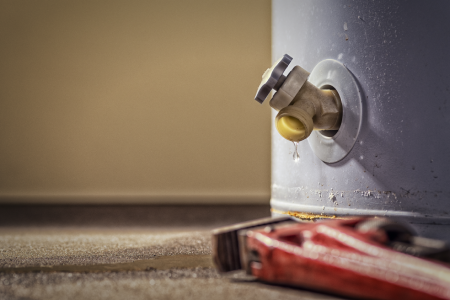How to Drain a Hot Water Heater

You may not think about your hot water heater very much until you jump into a cold shower, but this essential appliance does need some routine attention. Read on to learn more about the maintenance of your water heater so you can keep it running smoothly year after year.
Benefits of Draining Your Hot Water Heater
The primary benefit of draining your hot water heater is to remove sediment that can corrode the interior shell and water lines. Most sediment is calcium from hard water, but you may also see signs of rust when you drain your hot water heater.
Routine Maintenance for a Hot Water Heater
If you still have the manual for your hot water heater, check the section about routine maintenance. It should outline how often the appliance should be drained and cleaned. Most models need to be drained every six to 12 months. If you live in an area of Erie County with hard water, you should drain the unit more often.
Signs That You Should Drain Your Hot Water Heater
Draining your hot water heater keeps it running properly so you have hot water for your daily needs. Draining the water heater also protects the appliance from excessive wear and tear that may result in damage that may require replacing the unit. Some of the most common signs that your hot water heater needs to be drained are:
- Running out of hot water too soon
- Discolored hot water
- Noises from the unit
- Water leaks around the unit
1. Turn Off the Water Heater
For electric hot water heaters, you can turn off the breaker to the unit. If you have a natural gas water heater, you need to find the pilot light. The switch near the flame should be turned to the “pilot” position. This keeps the pilot light lit, but stops the heater from warming the water.
2. Let the Water Cool Down
The water inside your hot water heater can be up to 140 degrees Fahrenheit, so it’s important that you let the water cool down before you try to work with the unit. Depending on the size of your hot water heater, it may take up to three hours for the water to cool down completely. Be sure to leave the inlet valve in the “on” position.
3. Clear the Pipes
After the water inside the tank has cooled down, switch the inlet valve for cold water to the “off” position. Next, turn on the hot water faucet in a bathroom or kitchen. If you have more than one story in your Erie County home, we recommend that you use a faucet that is on a level above the hot water heater. Let the water run from the faucet until you feel cool water coming from the hot water faucet.
4. Open the Pressure Relief Valve
Draining water from the tank through a faucet also removes pressure from the pipes, but there may still be some residual pressure inside the hot water tank. Slowly open the pressure relief valve on the tank. The unit may make a hissing sound, and this is quite normal.
5. Drain the Water Heater
You’ll want to be careful with where the water drains from your water heater. You can use a hose to reach a drain in your basement or your outdoor space. You can also empty the water into a bucket. Make sure that the water flow is consistent. For routine maintenance, you only need to remove about one to gallons of water, as this will remove most of the sediment in the bottom of the tank.
6. Clean Out the Tank
After the water drains from the water heater, you should clean it out as best as possible. Open the cold water intake valve, and fill the tank. Drain the water through the hose. You can keep doing this until the water from the tank is clean and free of sediment.
Expert Service for Your Hot Water Heater
Since 1946, Vastola Heating & Cooling has helped Erie County residents with professional, reliable plumbing, heating, and cooling services. We offer installations, maintenance, and repairs. Vastola Heating & Cooling is a family-owned business, and our technicians are licensed and bonded, so you can feel confident about the quality of our work and know that you’re in good hands. Give us a call to schedule an appointment with one of our technicians.











